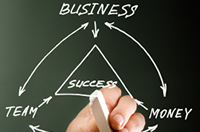The "LARA" model for leadership development
The “LARA” model leads us through the stages of leadership development. The model shows how, with heightened awareness and responsibility we can, as leaders increase the quality of the input we receive and the output we produce.
|
 |
Learning
Learning is the introduction of new information.
Learning can be from our family and friends as we grow up. It can be from our workmates and bosses. It can be from school or college or it can be from workplace education.
It is every interaction, every challenge, every issue.
In most cases we don’t choose what we learn, as leaders it is imperative that we choose to learn in every situation.
How do we choose to learn? |
| ------------------------------------------------------------------------------------------------------------------------------------------------------------ |
 |
Awareness
Being “switched on”. Having focused attention.
As with our eyesight awareness can be good or poor. With eyesight good is the norm, with awareness poor is the norm. With our eyesight we can raise the level with a magnifying glass. Awareness can be raised by focused attention and practice.
It is the gathering and clear perception of the relevant facts and information, and the ability to determine what is relevant.
Awareness also includes self awareness, in particular recognising when and how our emotions and desires distort our own perception.
Crank up the awareness. Switch on to all you can. If you crank up awareness you increase the amount and the quality of input.
Output is directly linked to input. No matter how good we think our output is, it can only be increased by the quality of our input and the quality of our input is directly linked to our exposure to learning and our awareness.
Awareness is being aware of all the inputs available to you. Self awareness is understanding the meaning you are giving them and how you can make them fit your model. |
| ------------------------------------------------------------------------------------------------------------------------------------------------------------ |
 |
Responsibility
Having control over the things we can control.
When we truly accept, choose or take responsibility for our thoughts and our actions, our commitment to them rises and so does our performance. When we are ordered to be responsible or told to be, if we don't accept the responsibility then our performance doesn’t rise. Sure we may do the job because there is an implied threat. To feel truly responsible invariably involves choice.
Cause and effect. We can either be the cause of all around us or we can be in effect of what is happening around us. We must first move ourselves to cause to be effective leaders. Cause means asking oneself what can “I” do to move the situation forward. As soon as we choose to pass responsibility to others we lose our ability to control the situation. |
| ------------------------------------------------------------------------------------------------------------------------------------------------------------ |
 |
Action
To do something. What prevents action? In most cases it is a fear of failure.
So what is the fear of failure, where does it come from. To generalise it comes from our past experience, not just the experience more the meaning we gave to that experience. We can only perceive things as we are and in many cases we have built up a belief that if we do something and we fail then we experience great pain inside and we all know that we will do more to avoid pain than we will to gain pleasure. We are conditioned to avoid failure at all costs.
Avoiding failure means choosing not to learn because the most effective way of learning is by experiencing what works and what doesn’t work. To grow, means that we must risk failure. If we have never experienced something before then we cannot know whether it will work or not.
Action is by far the most important aspect of leadership. If we choose what we need to learn, heighten our awareness and take responsibility for our own actions. Then we will find that action comes more naturally. By following the model it is possible to reduce the fear of failure. |
